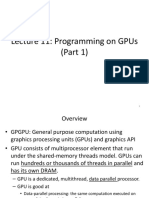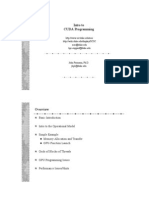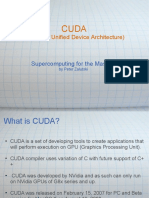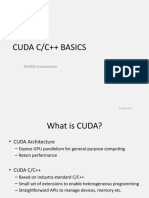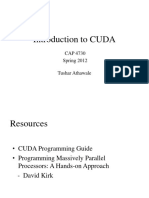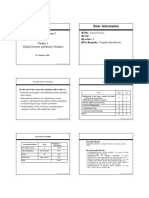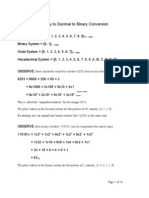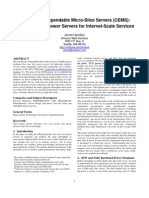0% found this document useful (0 votes)
43 views13 pagesData Parallelism, Task Parallelism, CPU, GPU
The document compares CPUs and GPUs, highlighting their architectures and performance capabilities. CPUs are optimized for sequential processing with fewer powerful cores, while GPUs excel in parallel processing with many simpler cores. Performance metrics such as computational performance and memory bandwidth are discussed, along with example code demonstrating CPU and GPU execution times.
Uploaded by
TIKTOK DHAMALCopyright
© © All Rights Reserved
We take content rights seriously. If you suspect this is your content, claim it here.
Available Formats
Download as PPTX, PDF, TXT or read online on Scribd
0% found this document useful (0 votes)
43 views13 pagesData Parallelism, Task Parallelism, CPU, GPU
The document compares CPUs and GPUs, highlighting their architectures and performance capabilities. CPUs are optimized for sequential processing with fewer powerful cores, while GPUs excel in parallel processing with many simpler cores. Performance metrics such as computational performance and memory bandwidth are discussed, along with example code demonstrating CPU and GPU execution times.
Uploaded by
TIKTOK DHAMALCopyright
© © All Rights Reserved
We take content rights seriously. If you suspect this is your content, claim it here.
Available Formats
Download as PPTX, PDF, TXT or read online on Scribd
/ 13





